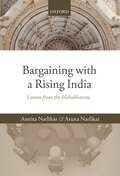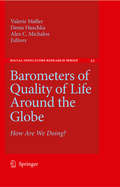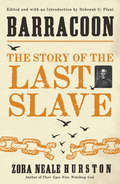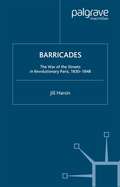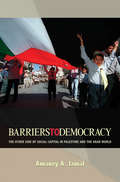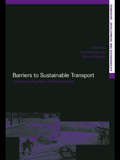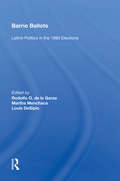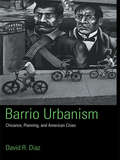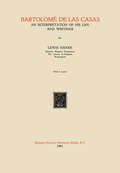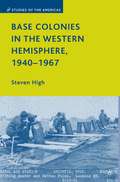- Table View
- List View
Bargaining With A Rising India: Lessons From The Mahabharata
by Amrita Narlikar Aruna NarlikarThe need to negotiate effectively with India is only growing as its power rises. Understanding the negotiating culture wherein India's bargaining behaviour is embedded forms a crucial step to facilitate this process. In the literature on international negotiation, experimental studies point to specific behavioural characteristics of Indian negotiators. Empirical analyses confirm these findings, and many suggest that the sources of India's negotiation behaviour are deep-rooted and culture-specific, going beyond what standard explanations of interest group politics, partisan politics, or institutional politics would suggest. But there are very few works that trace these sources. Extensive sociological and anthropological, and comparative political studies remain confined to their own fields, and do not develop their implications for Indian foreign policy or negotiation. There is a conspicuous lack of works that attempt to unpack the "negotiating culture" variable using literary sources. This book aims to fill both these gaps. It focuses on India's negotiating traditions through the lens of the classical Sanskrit text, the Mahabharata, and investigates the continuities and changes in India's negotiation behaviour as a rising power.
Bargaining with the State (PDF)
by Richard A. EpsteinBargaining with the State examines the threats to liberty that arise through the power of government selectively to distribute benefits and favors to its citizens. For Richard Epstein, the preservation of individual liberty against government contractual power advances not only the short-term interest of the individual citizen but also the long-term overall social welfare.
Barn 8: A Novel (G - Reference,information And Interdisciplinary Subjects Ser.)
by Deb Olin UnferthOne disaffected administrator, one disenchanted teenager, four hundred and twenty-one vegan extremists, sixty trucks, and nine hundred thousand grumpy layer hens awaiting liberation. In barns. Six barns. No, wait, seven. No, wait ... Two auditors for the US egg industry conceive a plot to liberate an entire egg farm’s worth of animals, with catastrophic results. This wildly inventive but utterly plausible novel about a heist of a very unusual kind swirls with a rich array of voices: a farmer’s daughter, hundreds of activists, a forest ranger who stumbles upon forty thousand hens, and a security guard abandoned for years on a farm. We glimpse the evolution of chickens twenty thousand years from now. We hear what hens think happens when they die.And at the heart of this more-than-plucky novel lies the question: what constitutes meaningful action in a world so in need of change? With towering ingenuity, eviscerating wit, and unflappable passion, Barn 8 is a true rare breed, a comic-political drama, and a tour de force for our time.
Barometers of Quality of Life Around the Globe: How Are We Doing? (Social Indicators Research Series #33)
by Denis Huschka Alex C. Michalos Valerie MøllerQuality of life (QOL) research has made great strides since the social indicator movement started as a scientific enterprise in the 1960s. Following the lead of pioneers in North America and Europe, social scientists in other regions of the world have adopted and refined social data systems or barometers to monitor progress in enhancing the welfare and well-being of citizens. A distinctive feature of these barometers is that they measure both individual and societal quality of life. While not overlooking the more basic needs and material standards of living, the barometers also inform on issues of individual freedoms and choices and constraints on citizen empowerment that enhance and depress quality of life. Designed to capture nuances in local definitions of the good life, regional barometers are unique expressions of the obstacles facing different societies in their quest to achieve the good life. Scholars of public policy as well as policy makers will find inspiration from reviews of innovative initiatives to monitor contemporary quality of life in six regions of the world spanning South America, the Arctic, Europe, Africa, Asia, and Australia.
Barracoon: The Story Of The Last "black Cargo"
by Zora Neale HurstonAbducted from Africa, sold in America. “A deeply affecting record of an extraordinary life”- Daily Telegraph A major literary event: a newly published work from the author of the American classic Their Eyes Were Watching God, with a foreword from Pulitzer Prize-winning author Alice Walker.
Barred: Why the Innocent Can't Get Out of Prison
by Daniel S. MedwedA groundbreaking exposé of how our legal system makes it nearly impossible to overturn wrongful convictions Thousands of innocent people are behind bars in the United States. But proving their innocence and winning their release is nearly impossible. In Barred, legal scholar Daniel S. Medwed argues that our justice system&’s stringent procedural rules are largely to blame for the ongoing punishment of the innocent. Those rules guarantee criminal defendants just one opportunity to appeal their convictions directly to a higher court. Afterward, the wrongfully convicted can pursue only a few narrow remedies. Even when there is strong evidence of a miscarriage of justice, rigid guidelines, bias, and deference toward lower courts all too often prevent exoneration. Offering clear explanations of legal procedures alongside heart-wrenching stories of their devastating impact, Barred exposes how the system is stacked against the innocent and makes a powerful call for change.
Barricades: The War of the Streets in Revolutionary Paris, 1830-1848
by J. HarsinBetween 1830 and 1848, Paris was rocked by two successful revolutions, three failed insurrections, and seven serious assassination attempts against King Louis-Phillippe and his sons. The June Days of 1848 - the worst urban insurrection in history until that time - finally brought this period to a close. Using a wide variety of sources, including detailed court records and hundreds of depositions of witnesses and suspects, Jill Harsin examines revolutionary republicanism during the violent underground movement of the July Monarchy, and describes these events in vivid detail. The lives of 'ordinary men' are captured in their own words as Harsin illuminates the political aspirations of the working class. Harsin's original writing style and compelling discussions shed new light on the particular turbulence of this era, a period of disruption that stemmed from the contemporary working class codes of masculinity and honour.
Barriers to Democracy: The Other Side of Social Capital in Palestine and the Arab World (PDF)
by Amaney A. JamalDemocracy-building efforts from the early 1990s on have funneled billions of dollars into nongovernmental organizations across the developing world, with the U.S. administration of George W. Bush leading the charge since 2001. But are many such "civil society" initiatives fatally flawed? Focusing on the Palestinian West Bank and the Arab world, Barriers to Democracy mounts a powerful challenge to the core tenet of civil society initiatives: namely, that public participation in private associations necessarily yields the sort of civic engagement that, in turn, sustains effective democratic institutions. Such assertions tend to rely on evidence from states that are democratic to begin with. Here, Amaney Jamal investigates the role of civic associations in promoting democratic attitudes and behavioral patterns in contexts that are less than democratic. Jamal argues that, in state-centralized environments, associations can just as easily promote civic qualities vital to authoritarian citizenship--such as support for the regime in power. Thus, any assessment of the influence of associational life on civic life must take into account political contexts, including the relationships among associations, their leaders, and political institutions. Barriers to Democracy both builds on and critiques the multifaceted literature that has emerged since the mid-1990s on associational life and civil society. By critically examining associational life in the West Bank during the height of the Oslo Peace Process (1993-99), and extending her findings to Morocco, Egypt, and Jordan, Jamal provides vital new insights into a timely issue.
Barriers to Effective Civil Society Organisations: Political, Social and Financial Shifts (Routledge Explorations in Development Studies)
by Ibrahim Natil Vanessa Malila Youcef SaiThis book provides an insight into the historical changes and present-day circumstances that have influenced, and continue to influence, the development and future of civil society. Civil society organisations (CSOs) play a crucial role in international development, however their impact on policy and practice is limited by a range of shifts across their political, social and financial landscapes. Barriers to Effective Civil Society Organisations is divided into three parts addressing each of these shifts in turn, and places particular emphasis on civil society actors linked not only by political constraints, but also by ethnic and cultural diversities that are crucial markers of political and social identity. This book draws on case studies from across Latin America, Africa, MENA and Ireland to highlight how CSOs in these countries are shaped by, and react to, shifting challenges. Reflecting on solutions for the sector, the authors provide an understanding of the various ‘self-accommodation’ policies and techniques employed by CSOs in order to continue their services and increase their credibility across global contexts. Aimed at researchers, policy makers and CSO/NGO workers looking to better understand the current state and future of the sector from the perspective of emerging scholars working in these regions, and in the Global South in particular, this innovative book is a celebration of the important work of CSOs and a reaffirmation of their right to sit at the policy table.
Barriers to Effective Civil Society Organisations: Political, Social and Financial Shifts (Routledge Explorations in Development Studies)
by Ibrahim Natil Vanessa Malila Youcef SaiThis book provides an insight into the historical changes and present-day circumstances that have influenced, and continue to influence, the development and future of civil society. Civil society organisations (CSOs) play a crucial role in international development, however their impact on policy and practice is limited by a range of shifts across their political, social and financial landscapes. Barriers to Effective Civil Society Organisations is divided into three parts addressing each of these shifts in turn, and places particular emphasis on civil society actors linked not only by political constraints, but also by ethnic and cultural diversities that are crucial markers of political and social identity. This book draws on case studies from across Latin America, Africa, MENA and Ireland to highlight how CSOs in these countries are shaped by, and react to, shifting challenges. Reflecting on solutions for the sector, the authors provide an understanding of the various ‘self-accommodation’ policies and techniques employed by CSOs in order to continue their services and increase their credibility across global contexts. Aimed at researchers, policy makers and CSO/NGO workers looking to better understand the current state and future of the sector from the perspective of emerging scholars working in these regions, and in the Global South in particular, this innovative book is a celebration of the important work of CSOs and a reaffirmation of their right to sit at the policy table.
Barriers to Employment: Impact of Macro, Individual and Enterprise-level Variables (SpringerBriefs in Economics)
by Arup MitraThis book uses the state-level panel data to identify some of the important correlates of employment growth/elasticity and indicators of quality-employment. To do so, it considers a wide spectrum of variables including physical, financial and social infrastructure specific indicators and government spending in certain key areas. In addition to the aggregate employment, the book also comprises analysis of different sectors, regions and gender categories. Based on the results, it identifies crucial determinants which bear important policy implications.The book presents evidence showcasing how the overall investment climate and an effective state, as envisaged in terms of increased social expenditure, are instrumental to improvements in employment elasticity. The findings also reinforce the role of industry-led growth and agglomeration economies in contributing to employment growth. Besides, based on the unit-level data from the periodic labour force surveys, the book tries to answer a wide range of questions such as, what restricts a person from getting absorbed in a high productivity activity; within a given sector why one is in a casual or self-employed job and not in regular wage job; are casual wage jobs in the informal sector different from those in the formal sector; and why the wage variations exist across sectors and activities. The three rounds of periodic labour force surveys reflect on certain individual and household characteristics; in particular, the role of education is seen to be crucial in determining the occupational choice and the wage rate. Finally, the book focuses on the enterprise-level data and identifies the types of units which are vulnerable within the unorganized sector. It assesses the links of the unorganized sector units with their organised sector counterpart and identifies the factors which reduce the economic viability of the units.
Barriers to Entry and Growth of New Firms in Early Transition: A Comparative Study of Poland, Hungary, Czech Republic, Albania and Lithuania
by Iraj Hoshi Ewa Balcerowicz Leszek Balcerowiczinefficient and uncompetitive enterprises especially from the over-grown industrial sector. These initial conditions meant that, in the early stages of transition, the volume of entries and exits will be, by necessity, very high reflecting the large scale changes that had to take place before these economies attain a macroeconomic structure consistent with their level of development and with the needs of a market-based economy open to internationalcompetition. One of the main elements of the reform programme in all economies in transition was the liberalisation of entry conditions. Along with the liberalisation of prices and foreign trade, appropriate measures facilitating the establishment of new enterprises were approved in the very early phase of reforms in all of these countries. The effectiveness of liberalised entry conditions, of course, depends on the presence of appropriate legal and institutional framework in which new firms will operate. The establishment of a conducive legal and institutional environment, however, takes much longer. In practice, new firms come into existence before the rules of the game are properly established. These rules develop gradually and are not always, and everywhere, consistent with the aim of liberalising the entry conditions. The conditions facing new firms, therefore, have fluctuated in some countries in accordance with changes in the political environment and in line with the strength of different lobbies and interest groups.
Barriers to Sustainable Transport: Institutions, Regulation and Sustainability (Transport, Development and Sustainability Series)
by Piet Rietveld Roger R. StoughThe complexity of transportation systems and their negative social and environmental effects are today at the centre of attention. This book focuses on the impact of institutions and regulatory systems on transport systems and travel behaviour. While institutions appear to play an important role in the economic success of many countries, this book considers the extent to which they also support sustainable development.
Barriers to Sustainable Transport: Institutions, Regulation and Sustainability (Transport, Development and Sustainability Series)
by Piet Rietveld Roger R. StoughThe complexity of transportation systems and their negative social and environmental effects are today at the centre of attention. This book focuses on the impact of institutions and regulatory systems on transport systems and travel behaviour. While institutions appear to play an important role in the economic success of many countries, this book considers the extent to which they also support sustainable development.
Barrington Moore Jr
by Dennis SmithThis title was first published in 1983. Throughout this present book author states his objective will be to elicit Moore’s approach to the question he regards as central: how may historical knowledge be used by men and women in order to comprehend and master their destiny within the limits of their moral and rational development and the stage of evolution reached by the societies and the global order to which they belong? This study is divided into four parts. In the first part an account of the text of Social Origins will be followed by, on the one hand, an analysis of the political and intellectual context in which it appeared and, on the other hand, a survey of reviews. In the second part attention will be paid to the development of Moore’s theoretical approach. In the third part the major political and historical studies will be analysed. Soviet Politics and Social Origins will be discussed first. In the fourth part Moore’s approach to historical analysis and political theory will be contrasted with those of a number of his contemporaries. Finally, Moore’s work will be related to the concerns of critical theory and the project of ‘restructuring’ social and political theory espoused by Richard Bernstein.
Barrington Moore Jr
by Dennis SmithThis title was first published in 1983. Throughout this present book author states his objective will be to elicit Moore’s approach to the question he regards as central: how may historical knowledge be used by men and women in order to comprehend and master their destiny within the limits of their moral and rational development and the stage of evolution reached by the societies and the global order to which they belong? This study is divided into four parts. In the first part an account of the text of Social Origins will be followed by, on the one hand, an analysis of the political and intellectual context in which it appeared and, on the other hand, a survey of reviews. In the second part attention will be paid to the development of Moore’s theoretical approach. In the third part the major political and historical studies will be analysed. Soviet Politics and Social Origins will be discussed first. In the fourth part Moore’s approach to historical analysis and political theory will be contrasted with those of a number of his contemporaries. Finally, Moore’s work will be related to the concerns of critical theory and the project of ‘restructuring’ social and political theory espoused by Richard Bernstein.
Barrio America: How Latino Immigrants Saved the American City
by A. K. Sandoval-StrauszThe compelling history of how Latino immigrants revitalized the nation's cities after decades of disinvestment and white flight Thirty years ago, most people were ready to give up on American cities. We are commonly told that it was a "creative class" of young professionals who revived a moribund urban America in the 1990s and 2000s. But this stunning reversal owes much more to another, far less visible group: Latino and Latina newcomers.Award-winning historian A. K. Sandoval-Strausz reveals this history by focusing on two barrios: Chicago's Little Village and Dallas's Oak Cliff. These neighborhoods lost residents and jobs for decades before Latin American immigration turned them around beginning in the 1970s. As Sandoval-Strausz shows, Latinos made cities dynamic, stable, and safe by purchasing homes, opening businesses, and reviving street life. Barrio America uses vivid oral histories and detailed statistics to show how the great Latino migrations transformed America for the better.
Barrio Ballots: Latino Politics In The 1990 Elections
by Rodolfo O. de la GarzaThis book examines political activities in the key Latino barrio of five of the nation's principal cities during the 1990 elections: El Barrio of New York; Magnolia of Houston; Chicago's Pilsen; Boyle Heights in Los Angeles; and Calle Ocho in Miami.
Barrio Ballots: Latino Politics In The 1990 Elections
by Rodolfo O. de la GarzaThis book examines political activities in the key Latino barrio of five of the nation's principal cities during the 1990 elections: El Barrio of New York; Magnolia of Houston; Chicago's Pilsen; Boyle Heights in Los Angeles; and Calle Ocho in Miami.
Barrio Urbanism: Chicanos, Planning and American Cities
by David R. DiazThis, the first book on Latinos in America from an urban planning/policy perspective, covers the last century, and includes a substantial historical overview the subject. The authors trace the movement of Latinos (primarily Chicanos) into American cities from Mexico and then describe the problems facing them in those cities. They then show how the planning profession and developers consistently failed to meet their needs due to both poverty and racism. Attention is also paid to the most pressing concerns in Latino barrios during recent times, including environmental degradation and justice, land use policy, and others. The book closes with a consideration of the issues that will face Latinos as they become the nation's largest minority in the 21st century.
Barrio Urbanism: Chicanos, Planning and American Cities
by David R. DiazThis, the first book on Latinos in America from an urban planning/policy perspective, covers the last century, and includes a substantial historical overview the subject. The authors trace the movement of Latinos (primarily Chicanos) into American cities from Mexico and then describe the problems facing them in those cities. They then show how the planning profession and developers consistently failed to meet their needs due to both poverty and racism. Attention is also paid to the most pressing concerns in Latino barrios during recent times, including environmental degradation and justice, land use policy, and others. The book closes with a consideration of the issues that will face Latinos as they become the nation's largest minority in the 21st century.
Base Colonies in the Western Hemisphere, 1940–1967 (Studies of the Americas)
by S. HighThis book examines the social, economic and political aftermath of the famous Anglo-American 'destroyers-for-bases' deal of 2nd September 1940 that saw fifty obsolete U.S. destroyers exchanged for 'base colonies' in Trinidad, Bermuda, Newfoundland and the Bahamas.
Base Encounters: The US Armed Forces in South Korea (Anthropology, Culture and Society)
by Elisabeth SchoberBase Encounters explores the social friction that US bases have caused in South Korea, where the entertainment districts next to American military installations have come under much scrutiny.*BR**BR*The Korean peninsula is one of the most heavily militarised regions in the world and the conflict between the North and South is continually exacerbated by the presence of nearly 30,000 US soldiers in the area. Crimes committed in GI entertainment areas have been amplified by an outraged public as both a symbol for, and a symptom of, the uneven relationship between the United States and the small East Asian nation.*BR**BR*Elisabeth Schober's ethnographic history scrutinises these controversial zones in and near Seoul. Sharing the lives of soldiers, female entertainers and anti-base activists, she gives a comprehensive introduction to the social, economic and political factors that have contributed to the tensions over US bases in South Korea.*BR*
Base Encounters: The US Armed Forces in South Korea (Anthropology, Culture and Society)
by Elisabeth SchoberBase Encounters explores the social friction that US bases have caused in South Korea, where the entertainment districts next to American military installations have come under much scrutiny.*BR**BR*The Korean peninsula is one of the most heavily militarised regions in the world and the conflict between the North and South is continually exacerbated by the presence of nearly 30,000 US soldiers in the area. Crimes committed in GI entertainment areas have been amplified by an outraged public as both a symbol for, and a symptom of, the uneven relationship between the United States and the small East Asian nation.*BR**BR*Elisabeth Schober's ethnographic history scrutinises these controversial zones in and near Seoul. Sharing the lives of soldiers, female entertainers and anti-base activists, she gives a comprehensive introduction to the social, economic and political factors that have contributed to the tensions over US bases in South Korea.*BR*
